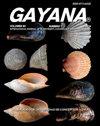Post-embryonic development and life table parameters of Neoseiulus californicus on Tetranychus desertorum and Panonychus citri (Acari: Phytoseiidae, Tetranychidae) under laboratory conditions
IF 0.2
4区 生物学
Q4 ZOOLOGY
引用次数: 0
Abstract
The postembryonic development, and life table parameters of the Neoseiulus californicus were studied under laboratory conditions in order to evaluate the potentiality of this depredator for feeding on two phytophages mites Tetranychus desertorum (desert spider mite) and Panonychus citri (red spider mite). Tetranychus desertorum and P. citri may be considered as optimal food for N. californicus, which obtained survival rates of 100 %, on them. The time of the postembryonic development was significantly different (p < 0.05) between both diets. The periods of ovoposition, postoviposition and longevity of the N. californicus were 17.17; 4.37 and 22.53 days, respectively, fed with T. desertorum, and 14.84; 5.23 and 21.06 days, respectively, fed with P. citri. The demographic parameters of N. californicus obtained fed with T. desertorum and P. citri were: intrinsic rate of increase (rm) = 0.269±0.004 and 0.307±0.004, mean generation time (T) = 12.847±0.185 and 10.791±0.142, net reproductive rate (Ro) = 31.792±1.478 and 27.352±1.187, finite rate of increase (λ) = 1.309±0.006 and 1.359±0.006, respectively. The high values of rm and λ registered for N. californicus under experimental conditions are indicators of control potential that this phytoseiid presented as a predator over these phytophages mites.加利福尼亚新叶螨在实验室条件下对荒漠叶螨和柠檬叶螨(Acari:Phytoseidae,Tetranychide)的胚胎后发育和生命表参数
在实验室条件下研究了加利福尼亚新叶螨的胚胎后发育和生命表参数,以评估该捕食动物以两种植食性螨为食的潜力。沙漠叶螨和柠檬叶螨可能是加州猪笼草的最佳食物,其存活率为100%。两种日粮的胚胎后发育时间有显著差异(p<0.05)。加州猪笼草的产卵期、产卵后期和寿命为17.17年;分别为4.37和22.53天和14.84天;5.23和21.06天。用假丝酵母和柠檬假单胞菌喂养的加州猪笼草的人口学参数分别为:固有增长率(rm)=0.269±0.004和0.307±0.004,平均世代时间(T)=12.847±0.185和10.791±0.142,净繁殖率(Ro)=31.792±1.478和27.352±1.187,有限增长率(λ)=1.309±0.006和1.359±0.006。在实验条件下,加州N.californicus登记的rm和λ的高值表明,这种植物毒素作为捕食者对这些植食性螨具有控制潜力。
本文章由计算机程序翻译,如有差异,请以英文原文为准。
求助全文
约1分钟内获得全文
求助全文
来源期刊

GAYANA
Agricultural and Biological Sciences-Aquatic Science
CiteScore
0.60
自引率
0.00%
发文量
5
期刊介绍:
GAYANA is a scientific journal published by Universidad de Concepción, Chile. It is the modern version of Gayana Oceanología and Gayana Zoología. Therefore its numeration starts at volume 63(1).
GAYANA covers all aspects of zoology and oceanographic research. It is structured in five sections, defined by subject or discipline: Ecology, Biodiversity and Taxonomy, Earth Sciences, Evolutionary, and Applied Biology and Environmental Biology. Each section is in charge of an editor who receives and manages the manuscripts sent for evaluation in close collaboration with the editorial board.
 求助内容:
求助内容: 应助结果提醒方式:
应助结果提醒方式:


